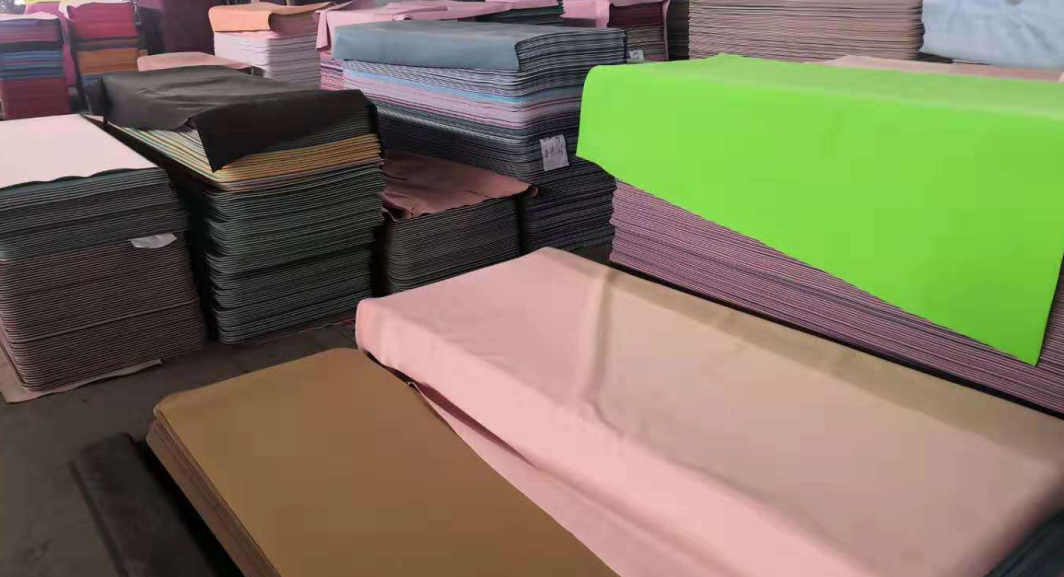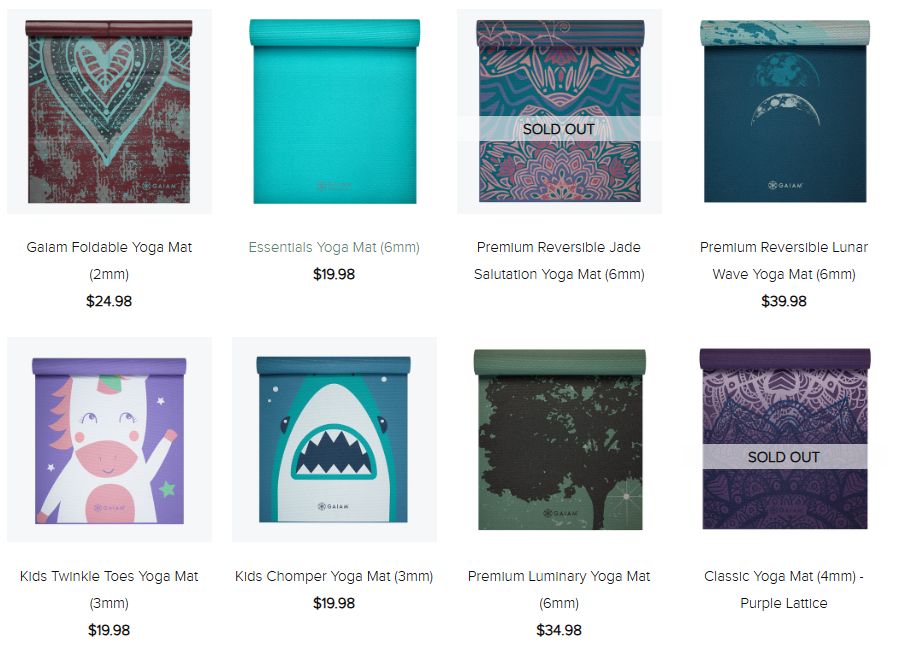I think Gaiam custom yoga mats suit many yoga lovers. They work well for beginners and those with more experience. People know Gaiam for good quality and prices. I find their mats offer great support for your yoga. Many Gaiam yoga mats use materials kind to the Earth. This makes them a safe and good choice for your yoga time. I like that they consider sustainability.

Gaiam’s Position in the Market
I see Gaiam as a great brand for new yogis. They offer mats at good prices, and you can find them in many places. Because they are easy to find and buy, many people choose them when they start yoga. I recommend them for this reason.
Range of Yoga Mat Products Offered
Gaiam has a wide variety of yoga mats. I’ve noticed they include:
– Classic Mats: Durable and comfortable for regular use. They’re great for beginners and casual practitioners who need an affordable yet reliable mat. With vibrant printed designs and standard thickness, they’re widely used in home practice.
– Premium Mats: Made with superior materials for enhanced grip and cushioning. These mats often feature non-slip textures and thicker padding for joint protection. Ideal for those who practice regularly or prefer a more stable, high-performance mat.
– Kids Mats: Kids Mats: These are made for young yogis. I believe they help kids start loving yoga from a young age. They come in fun colors and playful patterns that keep children engaged during class. The size is tailored to smaller bodies, making it easier for kids to move safely.
– Mats Kind to Earth: These are made from sustainable materials. I suggest these for people who care about the planet.
With so many choices, I think you can find a mat that’s right for you. This helps make your yoga practice feel more personal.
Main Materials Used in Gaiam Yoga Mats
I’ve found that Gaiam makes its custom print yoga mats from several materials. Each material offers something different, which I think is great for yoga practitioners.
PVC (Polyvinyl Chloride)
Gaiam uses PVC quite a bit in its classic yoga mat line. In my experience, this is a common choice for many brands.
– What I know about its properties: It’s affordable, it lasts a while, and it gives good cushioning.
– What I like: These mats are lightweight, offer a good grip, and are easy to find.
– My concerns: PVC isn’t biodegradable. This makes me consider its effect on the environment.

TPE (Thermoplastic Elastomer)
For its “eco” lines, Gaiam chooses TPE. I really appreciate this choice for a more earth-friendly option.
– What it’s like: TPE is lightweight. You can recycle it, and it’s non-toxic. I find these features very appealing.
– Pros in my view: It’s much better for the environment than PVC. Plus, it doesn’t contain heavy metals or phthalates, which I think is important.
– A point to consider: Sometimes, TPE might not be as durable as PVC. I’ve noticed this in some cases.
Natural Materials (in limited models)
I’ve seen Gaiam use these in some of their special mats.
– Cork: I’m a fan of cork. It naturally fights germs, it’s a renewable resource, and it gives a good grip, especially if your hands get a bit damp.
– Jute: This is a natural fiber. I like its earthy texture and its sustainable quality.
– Rubber: Rubber is biodegradable. However, Gaiam doesn’t use it very often in their products. I sometimes wonder why, as it seems like a good eco-friendly material.
– My observation: Gaiam carefully chooses these natural materials for specific “eco” collections. So, you won’t find them across all their mat types, but I suggest looking out for them if natural materials are important to you.
With these different materials, I believe Gaiam aims to provide a yoga mat for almost everyone. It also seems clear to me that they are thinking about sustainability, which I value.
Are Gaiam Mats Good for the Planet?
I find that many people think Gaiam yoga mats are a planet-friendly choice for their practice. The brand talks a lot about sustainability. They use different materials that people who care about the environment like.
What Gaiam Says About “Eco” vs. What’s Really In Their Mats
Gaiam says its mats are good for the planet. In my view, it’s important to check the materials they use. The company uses TPE for most of its “eco” mats. TPE is recyclable and not toxic. I believe this choice shows they want to lessen harm to the environment. But, PVC is still common in their classic mats, and PVC doesn’t break down naturally. So, even if Gaiam calls some mats good for the planet, the materials they use can be very different from mat to mat.
What About Certifications?
I’ve noticed many Gaiam mats are latex-free and phthalate-free. If you’re worried about toxins in your yoga gear, I think these labels can help you feel a bit more at ease.
How Do They Stack Up Against Other Green Brands?
When I look at other brands that focus on being green, Gaiam has a decent number of sustainable choices, but perhaps not the most. Some brands focus on using natural stuff like rubber and jute. Gaiam uses TPE and sometimes natural fibers, so I’d say they’re somewhere in the middle. If you want a mat that’s 100% natural, you might look at other brands. But, in my opinion, Gaiam offers a good middle ground for the typical yogi who wants to make a thoughtful purchase.
Expert Opinion:
“From my 15 years of experience with sustainable yoga gear, I see Gaiam as a transitional brand in the green product space.
Their TPE mats are a more sustainable choice than traditional PVC options. Still, I always advise my clients to look beyond the marketing slogans.
The term ‘eco-friendly’ isn’t black and white; it covers a wide range. I feel Gaiam sits in the middle. They offer affordable green alternatives. This means you don’t pay the high prices of brands that use all-natural materials.“
———— Dr. Sarah Martinez , Sustainable Materials Researcher and Certified Yoga Alliance Instructor
Can You Customize Gaiam Yoga Mats with Your Logo?
I’ve noticed that Gaiam doesn’t offer options to print your logo on their yoga mats at this time. It seems they work with manufacturers to produce mats in large quantities with standard designs, rather than offering custom branding like some yoga mat manufacturers do.
My Alternative Suggestion: Work with a Custom Yoga Mat Manufacturer

If you want mats showing off your studio, brand, or event logo, I recommend looking for a manufacturer who makes custom Yoga mats. I’ve found these custom yoga mat manufacturers usually allow for: – Logo printing: You can often choose from screen printing, embossing, or laser engraving for your logo. – Full packaging customization: You can design the packaging so it perfectly matches your brand’s style. I think this is a great touch. – Choice of eco or premium materials: They often let you select materials like TPE, cork, or natural rubber. This is helpful if you’re aiming for sustainability with your products.
What I See as Benefits of Custom Logo Mats
From my experience, custom logo yoga mats offer some solid advantages: – They significantly boost your brand’s visibility and help establish its identity. I think this is key for getting noticed. – They are fantastic for yoga instructors and fitness brands. I also recommend them for retail stores or if you’re looking for unique promotional gifts.
Material Choice and Branding Impact
The material you choose for your yoga mat says a lot about your brand. For example, if your brand stands for sustainability and mindfulness, opting for eco-friendly materials like cork or TPE reinforces that message. These materials not only appeal to environmentally conscious consumers but also help position your brand as responsible and forward-thinking.
On the other hand, if you’re targeting a premium or luxury market, materials with a more refined texture and higher density—such as natural rubber or high-grade TPE—can create a high-end feel that matches your pricing and image.
Ultimately, the best custom yoga mats strike a balance between function, comfort, and brand identity. A mat that performs well and feels great will keep customers coming back, while the right material and design can visually communicate your brand’s core values with every use.
summary
Based on my experience with Gaiam’s materials and their sustainability goals, I think they are a smart choice for mindful yogis. They may not be the top brand when it comes to being the most eco-friendly, but they are moving in the right direction. I feel their TPE options and newer natural material lines, like cork and jute, show real progress toward more sustainable production.
For those looking to go further — especially yoga studios or wellness brands — I suggest working with a yoga mat manufacturer that offers eco-friendly materials and private label options. These manufacturers often allow you to choose biodegradable or recycled materials, control over packaging, and printing methods that minimize waste and toxins.
In any case, I recommend choosing a sustainable mat — whether it’s from Gaiam or a specialized manufacturer. It’s a meaningful way to align your yoga practice with your values. Every thoughtful decision, from the mat you stand on to the brand you support, contributes to a healthier planet and a more conscious way of living.

